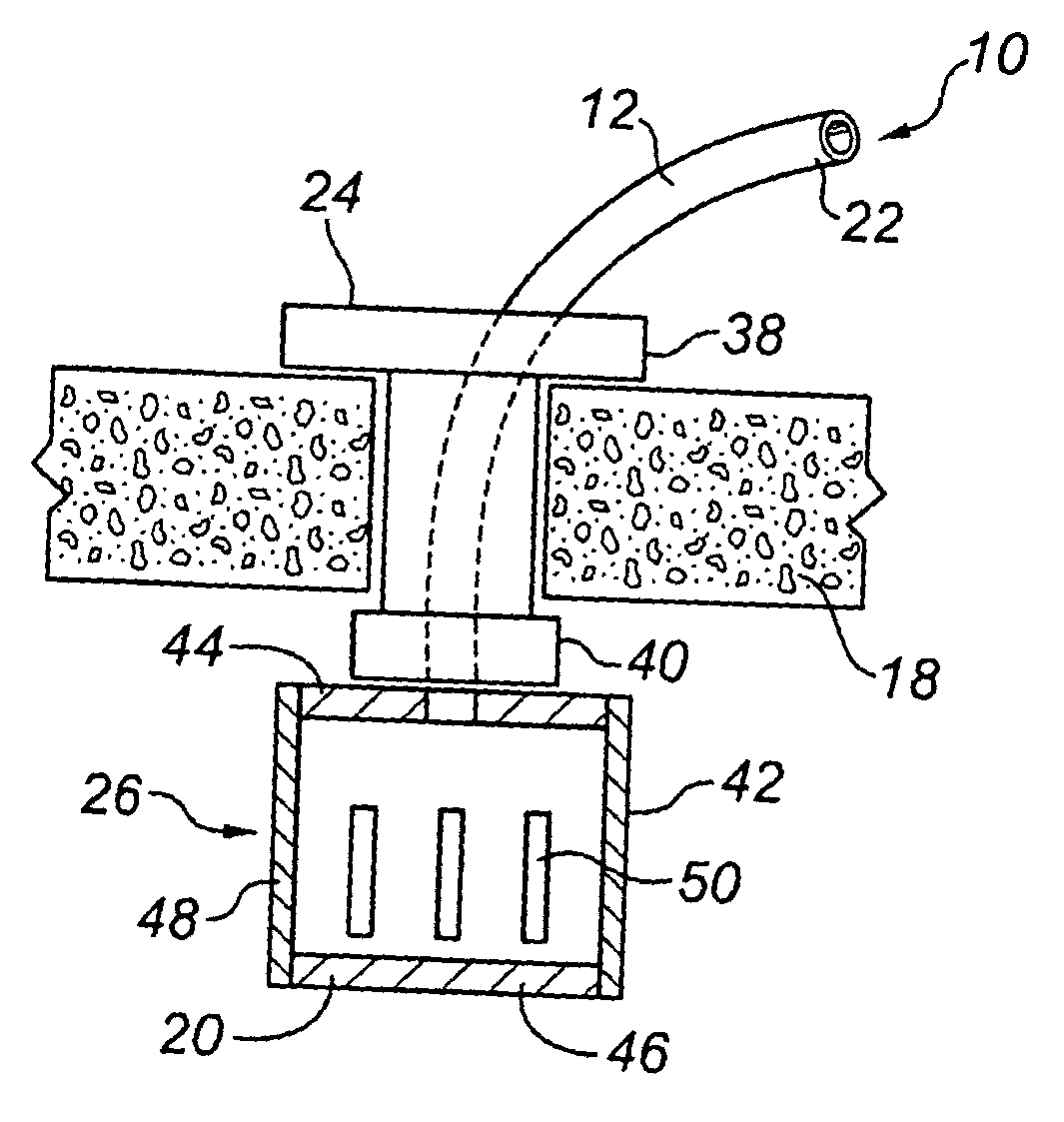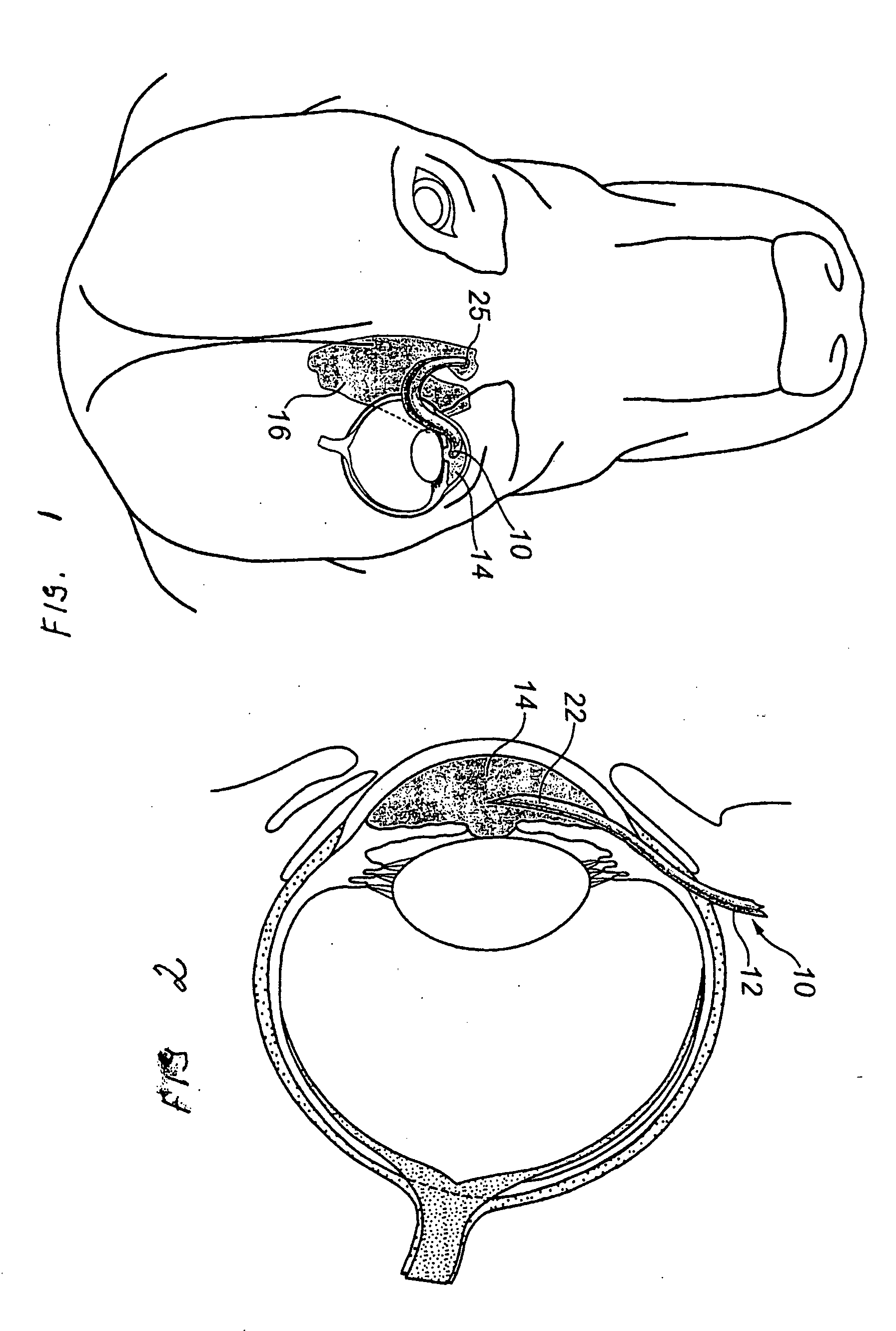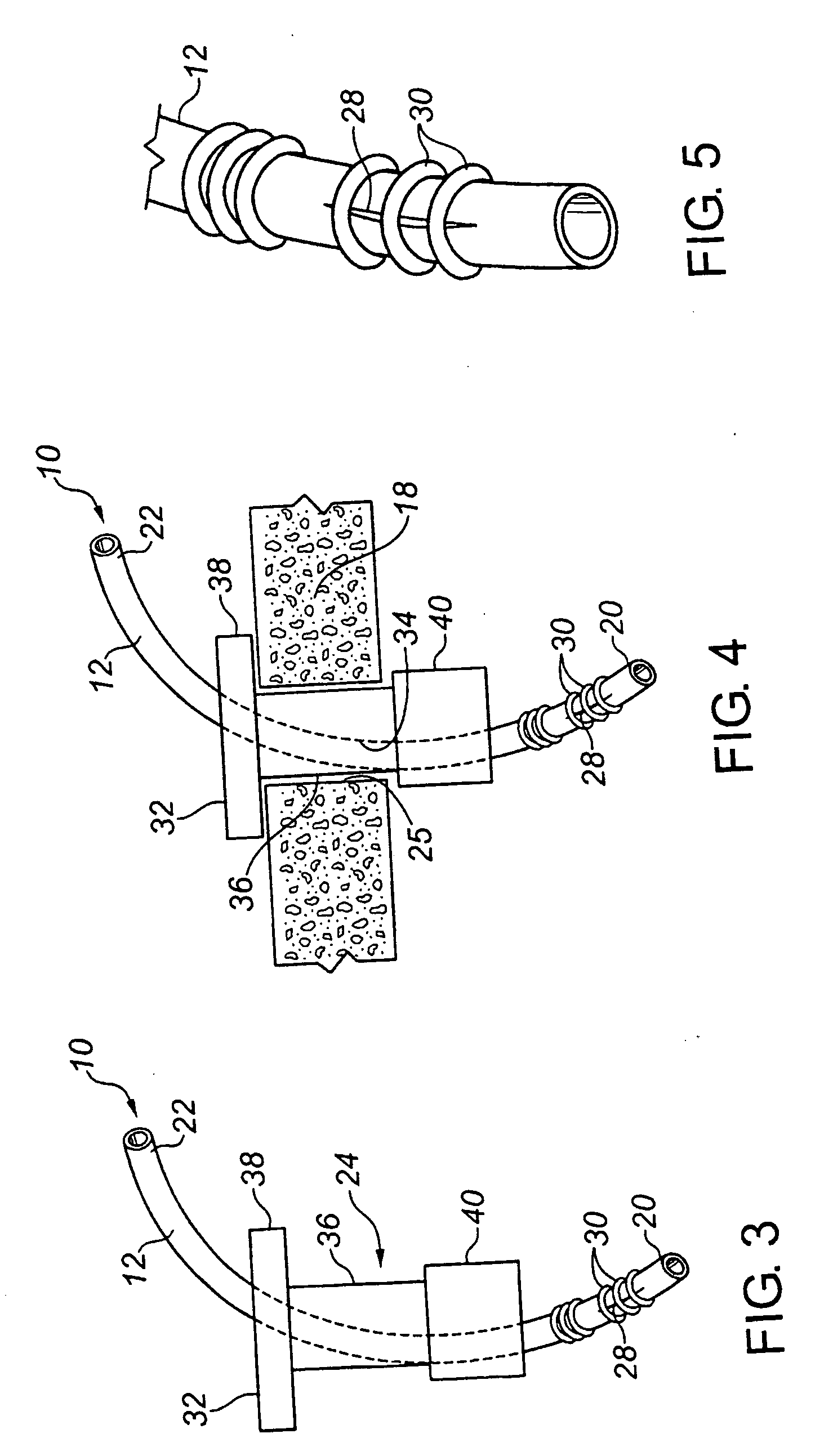Shunt and method treatment of glaucoma
a glaucoma and shunt technology, applied in the field of shunt and method treatment of glaucoma, can solve the problems of eye damage, eye pain, eye irritation, etc., and achieve the effects of reducing the risk of glaucoma, and improving the quality of li
- Summary
- Abstract
- Description
- Claims
- Application Information
AI Technical Summary
Benefits of technology
Problems solved by technology
Method used
Image
Examples
example
[0047] A shunt of the present invention was designed for and successfully implanted into four dogs having glaucoma. The details of the implanted shunt were as follows:
Tube and Slit Valve
[0048] Inner Diameter 0.02″ (0.5 mm) [0049] Outer diameter 0.037″ (0.94 mm) [0050] Length of Tube (rough cut to be 100 mm) then tailored to each eye in the operating room so that it extended approximately 1 / 3 away across the anterior chamber of the eye. [0051] Slit—1 mm length [0052] # Ligatures—4—to maintain predetermined fluid pressure, adjusted in the operating room [0053] Hole in the Frontal sinus bone (diameter)—(2 mm)
Plug (Sealing Device) [0054] Central Portion (that traversed the width of the bone)—(1.5 mm) [0055] Lower flange—2.5 mm [0056] Upper Flange—5 mm [0057] Length of Plug (Central Portion—traversing the bone)—3 mm
[0058] These patients did not experience frontal sinus, subcutaneous, conjunctival or intraocular infections; fibrosis, haemorrhage, or other untoward complications. Eac...
PUM
 Login to View More
Login to View More Abstract
Description
Claims
Application Information
 Login to View More
Login to View More - R&D
- Intellectual Property
- Life Sciences
- Materials
- Tech Scout
- Unparalleled Data Quality
- Higher Quality Content
- 60% Fewer Hallucinations
Browse by: Latest US Patents, China's latest patents, Technical Efficacy Thesaurus, Application Domain, Technology Topic, Popular Technical Reports.
© 2025 PatSnap. All rights reserved.Legal|Privacy policy|Modern Slavery Act Transparency Statement|Sitemap|About US| Contact US: help@patsnap.com



